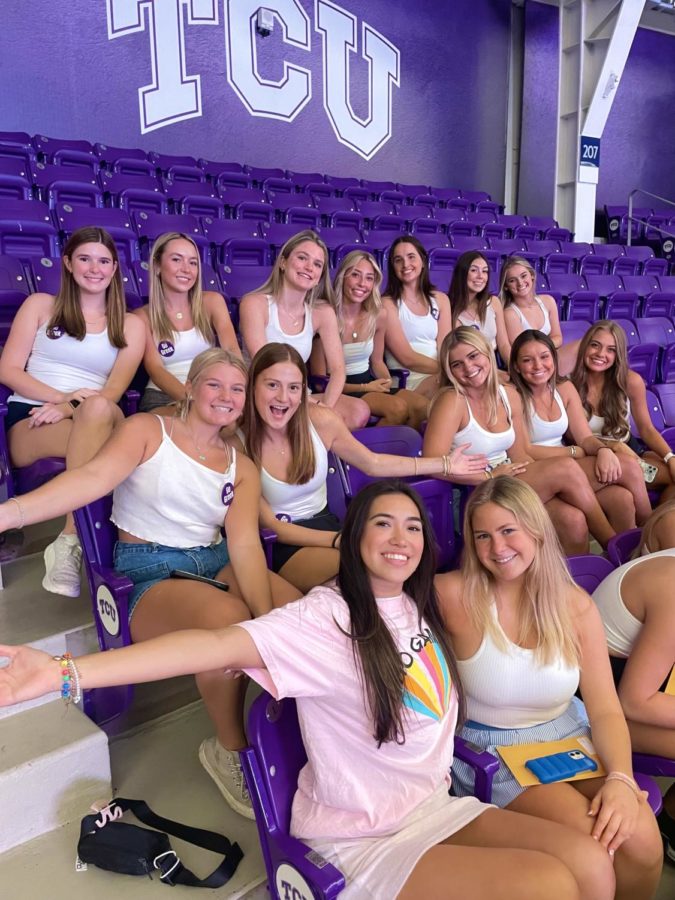Dr. John Geesbreght knew something needed to be done when his medical staff at Fort Worth’s Harris Hospital couldn’t read several of the emergency physicians’ handwriting.
He said scribes working in the emergency department as note-takers would not only improve the communication in the hospital, but also give young medics a chance to attain valuable experience and knowledge to help them succeed in the field.
So in 1995, Geesbreght, with approval from administration, recruited four pre-med TCU students and established what is now PhysAssist Scribes, Inc.
Senior biology major Kyle Cotten is in his second month as a scribe. Cotten said his primary role is to assist doctors in recording their cases.
“Scribes are responsible for documenting everything from the story the patient tells about why they came to the ER to the doctor’s physical exam findings to medications the doctor prescribes and, ultimately, the doctor’s diagnosis,” he said.
Although some are still in college, scribes are thrown right into the emergency room and are expected to keep pace. Sometimes they work extended hours during the day. Other times, they work night shifts that usually last until dawn.
Cotton said the experience is a continuous learning process.
“You are working alongside professionals who have been to medical school and have been practicing for years,” he said. “I run across something new during every shift, whether it’s a diagnosis, an X-ray reading, a medication I have never heard of or an anatomical term that I couldn’t spell to save my life.”
Of course, there’s always Google for those foreign anatomical terms.
“We always keep a Google tab open to look things up we are unsure about and most doctors welcome questions,” he said. “I also keep a sticky note pad in my pocket where I write things down and look them up later at home.”
Alumna Caitlyn Joseph is in her fifth month as a full-time scribe and compared the job to being a “fly-on-the-wall.” Scribes can’t interact with patients, she said, but they must write down everything that is said and done concerning the patient’s story and care.
Joseph said there’s a steep learning curve involved. Scribes usually see anywhere from 15 to 40 patients in their 10-hour shifts, she said.
Scribes may be thrown into the jungle, but they do go through extensive training before entering the field. It is former Horned Frog Paul Hickey’s job to coordinate this training program, called Scribe University.
Hickey, who is in his fifth year as a scribe, said he entered the field when Scribe University didn’t exist.
He said it was extremely overwhelming.
“It was so stressful back then,” he said. “I had no background. I had never seen a chart before on my first day as a scribe. It was just so accelerated back then and so stressful.”
“For five days, I take trainees and teach them in a lecture-style classroom all the medical terminology that they’re going to need to know and understand,” Hickey said. “I teach them the specific charting their hospital will be using on computer or paper.”
Mock scenarios put the trainees face-to-face with everything from shortness of breath and chest pain to dizziness and headaches. After five days, Hickey said he decides whether or not the trainees are ready to be transferred to the hospital where they receive additional training.
Working in the emergency room brings its challenges, especially when it comes to traumatic experiences, Cotten said.
Cotten said he can still vividly remember the first time he saw a patient almost die.
“I just tried hard to stay focused on filling out the chart and documenting everything I saw while staying out of the way of all the nurses and techs assisting the doctor,” he said.
It didn’t hit Cotten until later that night that he watched someone close to his age cling to life, he said.
“After the patient was stabilized and taken to surgery, we stayed so busy the whole night that I really didn’t have a chance to think about it until I got off,” he said. “I remember all the emotions hit me as I got to my car, and I had to take a few minutes to collect myself before driving home.”
Although the memory may not bother him anymore, he said it gave him “enormous respect” for doctors and their expertise.
Joseph recalls the first time she saw a patient die and described it as “an exceptionally upsetting experience.” But, she said, emotions must be checked out.
“That is something we learn to do with time,” she said.
Staffing Specialist Shannon Belden, another alumna, is in charge of recruiting the students. She said the first thing she looks for is a “passion for medicine.”
“If someone truly wants to pursue the path to becoming a nurse, PA or a doctor, then this is an excellent program for them, and they’re more likely to put in the work it takes to be a successful scribe,” she said.
Belden said most of the recruiting events take place on college campuses.
“We participate in career fairs, present at student organization meetings and set up tabling events,” she said. “We also work with Scribe Ambassadors. They are the current scribes who take on the task of helping us to recruit.”
Another part of recruiting involves building relationships with advisers, professors and career services, she said.
“Many of our scribes apply because they are looking for a way to get the experience they need but aren’t sure how,” she said. “So they go to their adviser, professor or career services department to find out about opportunities, and they point them in our direction.”
In the end, Belden said scribes must have the six qualities that fulfill the Scribe Honor Code: Sincerity, Caring, Responsiveness, Innovation, Balance and Efficiency (SCRIBE).
Both Cotten and Joseph plan on applying to medical school and said that TCU’s rigorous and challenging science curriculum has helped them prepare for the emergency department.
TCU’s science department implants depth and knowledge, but the first-hand experience of working as a scribe gives students an intangible gift, relationships with doctors whose footsteps they hope to someday follow.
“My favorite part about scribing is talking to the doctors,” Cotten said. “Most of them welcome questions and love to teach.”
Cotten said he tries to stay in constant conversation with the doctors to further understand their thought process.
“It’s really fascinating to take on the mindset of a physician,” he said. “I’ve learned that almost everything they do has a purpose medically, whether it’s a question they ask, a test they order or a specific area they examine on a patient. It all ties together, and it’s a fun challenge to anticipate what the doctor is thinking before they tell you their plan.”
Joseph said her favorite part about scribing is the exposure to the vast spectrum of patients and the time she gets to spend with the physicians.
“I don’t believe both of these experiences could be matched as completely in any place other than an ER,” she said.




